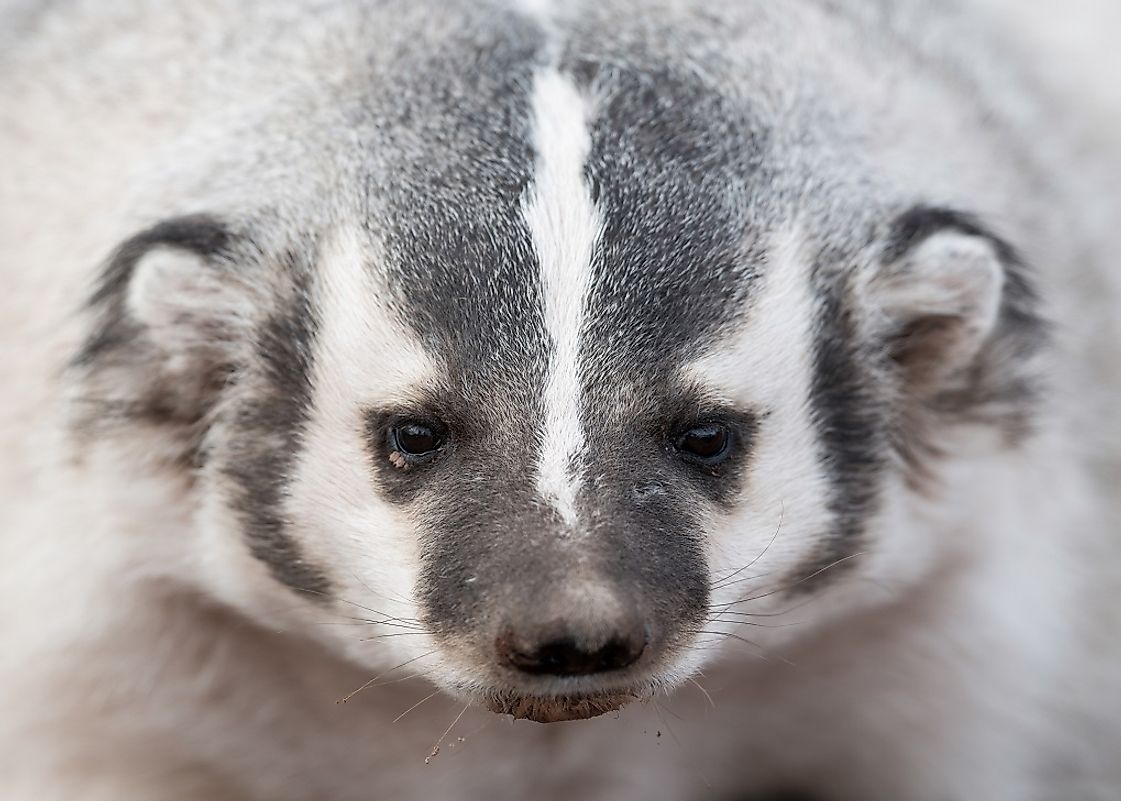American Badger Facts: Animals of North America

5. Physical Description
At first glance, the American Badger (Taxidea taxus) doesn’t look like much of a pageant winner, with many considering them downright ugly. They have characteristically long bodies with short legs, enabling them to be closer to the ground, which assists them when hunting. American Badgers have long, pointed, tipped-up noses. Their fur is brown or black in color, with a long white strip running from the point of their noses all the way up to the backs of their bodies. Ranging between 24 and 35 inches in length, and weighing in between 8 and 26 pounds, the American Badger is slightly larger than its southern cousin, the Honey Badger, and somewhat smaller than its cousin "across the pond", the European Badger.
4. Diet
The long, sharp claws of the American Badger help it to capture the small burrowing animals that comprise the lion's share of its diet. Ground squirrels, rats, gophers, and mice are the American Badger’s main food sources, as they are located in the same habitat ranges as the American Badger. In order to dig its prey from out of the ground, the American Badger will use its claws to scoop out any small animal or, at times, the American Badger will dig into the burrow itself and corner the rodent to its death within its own home. American Badgers are almost purely carnivororous, meaning they will mostly ingest meat, though small amounts of vegetation and fungi are consumed at timrs as qell.
3. Habitat and Range
Native to the North American grasslands that spread all the way from Southern Canada to Mexico, the American Badger have one of the largest ranges of all badger species. A fairly dry climate is favorable to the American Badger, and they prefer to reside in gassy fields and on prairie grounds. That being said, American Badgers can be found in cold deserts and many park lands as well. Per the latest Red List of Threatended Species released by the International Union for the Conservation of Nature, the American Badger is classified as a species of "Least Concern".
2. Behavior
Although the American badger is a common animal to encounter in the forests of North America, that doesn’t mean you can safely go up and pet one of these furry guys. Badgers are ferocious by nature, and a key contributor to the North American ecosystem. Therefore, they mustn’t be toyed around with, as many have learned the hard way. These badgers are solitary animals, who only meet up when it’s mating season. It is estimated that only about five badgers will live in the same area, with groups typically being separated by a radius of at least one kilometer. The American Badger is nocturnal, and tends to be very inactive during winter months, although they do not actually go as far as to hibernate. They dig burrows in which to sleep in, as well as to hide in to surprise prey when hunting. The American badger’s powerful paws sift through soil rapidly, which is a great asset to the animal when hunting for burrowing animals.
1. Reproduction
In terms of reproduction, the American Badger mates during the summer months of July and August. However, embryos don’t begin to grow until the beginning of December due to delayed implantation into the uterus, a process known as "embryonic diapause". After this happens, American badger fetuses grow until February, and are born into the spring months. On average, an American Badger female will give birth to five pups per litter. Once born, these "pups" will remain blind and helpless for the first several weeks of their life, meaning they are completely dependent upon their mothers for survival. After that period, the American Badger pups will become mobile, and at eight weeks they are weaned, and thusly begin to eat meat. At the age of five to six months, the American Badger pups will leave their mothers' sides to continue the cycle of life, independently hunting and breeding and raising pups of their own. On average, American Badgers will live up to five years in the wild.







